
Gradius Review: Reigniting the Genre's Engines
Gradius
Platform: Arcade, PC Engine (reviewed)
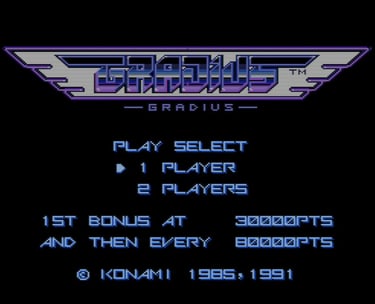


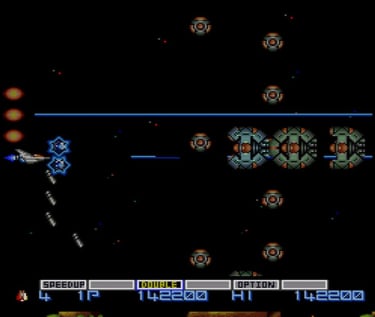
Levels often contain special challenges that interrupt the normal action like a mini-boss might. Top: The ship (Vic Viper) must dodge the junk spewing from the volcanoes below. Bottom: A cramped cage of lasers traps the player.
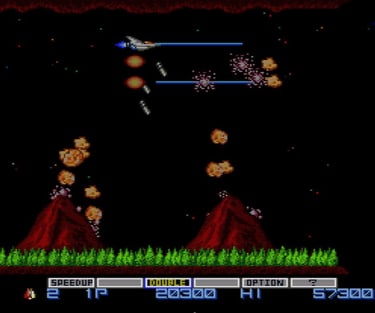

The “space shooter” began as a genre of firsts, a journey into the unseen far from beyond Pong and other terrestrial endeavors. Space Invaders ignited the phenomenon, offering a spate of aliens descending onto a lowly, dissenting ship—the first real taste of simulated survival and suspense. Galaga heightened that excitement, ushering in weaving, kamikaze-happy fiends that sprayed the stage with bullets and debris. Scramble went even farther, offering scrolling levels of unfolding dangers that kept players guessing right up until oblivion. The shooter, in these early days, was a malleable template, a genre seemingly built for endless interpretation and revision.
And then entered Gradius.
Konami’s 1985 classic redefined the genre yet again, stringing players through seven (and later, eight) stages of intergalactic harassment. Spitting Moai heads and exploding volcanoes and shattering dinosaur bones were but a few of the dangers players had to endure. In Gradius, each stage was a surprise, no stage was alike. Each was a well into a deeper hell, a beautiful voyage across a chasm of madness. Players proceeded not necessarily to win, but to simply witness what was waiting next off-screen.
Yes, Gradius redefined the shooter so well, the entire genre fell under its spell, that spinning continuum of experimentation soon reduced to a single dynamic. The shooter, and especially the side-scrolling kind, had simultaneously achieved its evolutionary peak and evolutionary dead end. Gradius was a new beginning for the genre, and more cruelly, the beginning of its crystallization and collapse.
Countless shooters followed the game’s seminal example. R-Type. Darius. Gleylancer. Thunder Force. Lords of Thunder. Each experience was similar. And each was different…but not different enough to redeem a genre doomed by its very liberation. Those scrolling stages of possibility, the swarming enemies and harrowing bosses, all became cliché. Like a crippled ship orbiting a dead star, the genre had become trapped by its own gravity. It’d run out of fuel.
Such is Gradius’ ironic legacy—a great game that, perhaps, proved too influential for its own good. Better shooters exist, of course, including some of the title’s own sequels, but in the end, their emergence only led to inevitable stagnation. By the late 1990s, the traditional shooter had lost both its resonance and its relevance against the first-person shooter. The action-RPG. The free-roaming adventure. Being just “fun” was no longer enough.
Yet, that evolutionary bottleneck did bear fruit in a certain sense—most ‘90s shooters, if not brilliant, were at least executed with a tried-and-true polish, their foundational template refined to nigh-perfection. Like pinball, the shooter was no longer about providing a new experience, but rather, a reliable burst of high-adrenaline entertainment. It was and still is a category of glory…however fleeting the feeling.
Congrats to Gradius, then, for getting the formula right back in ’85. It set the paradigm and froze the template, forever holding it in place.--D
Publisher: Konami
Developer: Konami
Release: 1985, 1991
Genre: Shooter


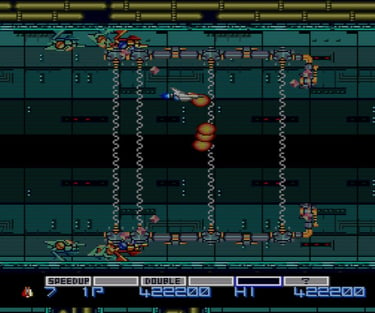

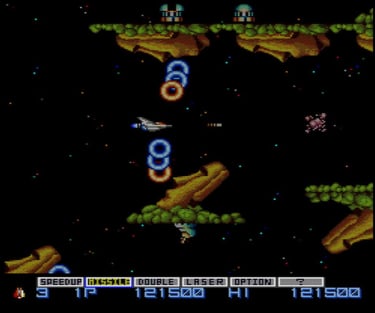


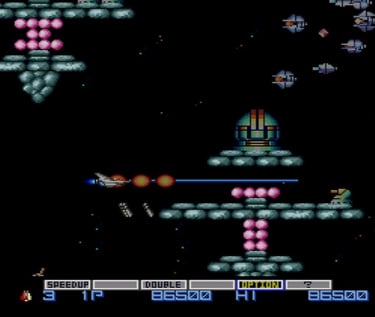

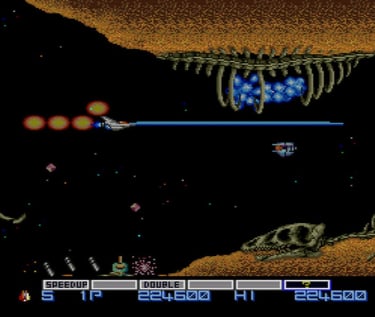
The arcade game has seven stages, but the PC Engine version got this additional eighth, a level that sends the ship into an exploding cavalcade of bones.
Gradius helped propel the shooter beyond its mostly single-screen dimensions much like Super Mario Bros. helped evolve the platformer beyond games like the non-scrolling Donkey Kong.
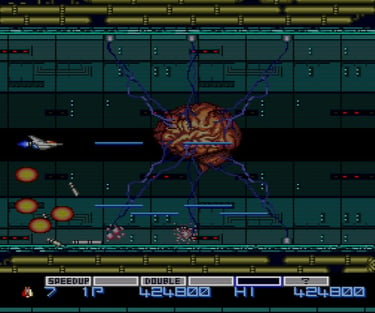

The final boss carries a clever twist--with all its minions blasted and surpassed, it's now utterly helpless.
Among other things, Gradius became famous for its clever upgrade system. By collecting special icons, players can configure their ship as needed. And in this stage, lasers are best for cutting through those pinkish walls.
Contact: lostnostalgiaproductions@gmail.com
Website: www.lostnostalgia.com
Like what we're doing? Please consider throwing us a dollar into our Patreon page's tip jar!


